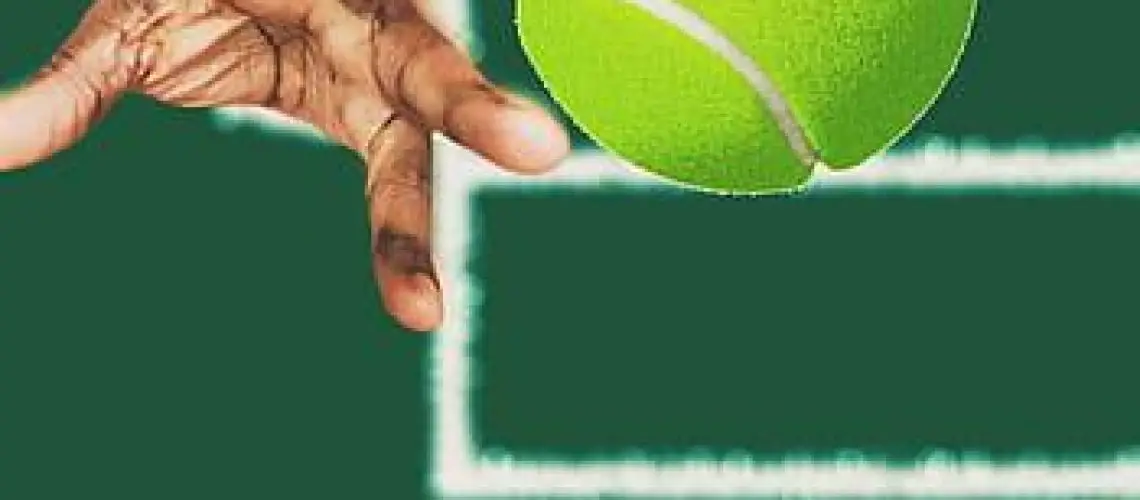We may earn money or products from the companies mentioned in this post.
Introduction

Tennis is not only a sport of skill and strategy but also one that has its own unique sense of style From the early days of this beloved game, players have always been conscious of their appearance on the court Tennis attire has evolved over time, reflecting both societal norms and practical considerations In this article, we will explore the fascinating history of tennis attire, focusing on the origins of the white dress code and how it became a tradition with significant meaning in the early days of tennis
The Origins of the White Dress Code
In the early years of tennis, players did not have a specific dress code to adhere to They wore outfits that were typical for outdoor activities at that time, such as long-sleeved shirts and trousers for men and long dresses for women However, as tennis gained popularity and formalized rules were established, a shift towards a more standardized dress code began to take place
The tradition of wearing white clothing in tennis can be traced back to Wimbledon, one of the oldest and most prestigious tennis tournaments in the world In 1877, when Wimbledon was first held, players were required to wear predominantly white attire during matches This rule was introduced by the All England Club, which organizes and oversees the tournament
How the Tradition Started and Its Significance in Early Days
The decision to implement a white dress code at Wimbledon was influenced by several factors Firstly, white clothing was seen as more practical for playing under hot summer conditions as it reflects sunlight rather than absorbing it like darker colors would This helped keep players cooler on court
Secondly, white clothing was associated with upper-class society during that era By adopting a strict all-white dress code, Wimbledon aimed to maintain an air of elegance and exclusivity within its tournament It became a symbol of tradition and sophistication, setting Wimbledon apart from other tennis events
Additionally, the white dress code was considered more aesthetically pleasing on the green grass courts of Wimbledon The contrast between the vibrant green surface and the crisp white clothing created a visually appealing spectacle for spectators
Furthermore, wearing white also had practical benefits in terms of cleanliness The lighter color made it easier to detect dirt and stains on clothing, allowing players to maintain a neat and presentable appearance throughout their matches
The significance of the white dress code extended beyond just aesthetics and practicality It became a representation of the sport’s heritage and traditions Players embraced this tradition as a mark of respect for the history of tennis and as an acknowledgment of being part of something greater than themselves
In conclusion, the origins of the white dress code in tennis can be traced back to Wimbledon’s early years What started as a practical choice for comfort and visibility on court evolved into a symbol of elegance, exclusivity, tradition, and respect for the sport’s history Even though modern tennis attire has become more diverse and colorful over time, the tradition of wearing predominantly white clothing at Wimbledon still remains intact today
Factors that led to changes in tennis attire

Tennis attire has undergone significant transformations over the years, influenced by various factors Two key drivers of these changes include the evolution of sports clothing technology and shifting social attitudes towards fashion in sports
Evolution of sports clothing technology
1 Development of performance-enhancing fabrics and materials
The advent of advanced fabrics and materials specifically designed for athletic performance has revolutionized tennis attire Innovations like moisture-wicking fabrics, breathable mesh panels, and lightweight blends have enhanced players’ comfort and functionality on the court These high-performance materials not only provide improved breathability but also offer flexibility and durability essential for intense movement during matches
2 The impact on players’ comfort, agility, and overall performance
The introduction of cutting-edge sports clothing technology has had a profound impact on tennis players’ comfort levels, agility, and overall performance The use of advanced materials ensures sweat is efficiently managed, preventing discomfort caused by excessive moisture accumulation Furthermore, the lightweight nature of modern tennis apparel allows athletes to move more freely without being weighed down by heavy garments
Changing social attitudes towards fashion in sports
1 Influence from other sports with more expressive clothing styles
Social attitudes towards fashion in sports have evolved significantly over time, with influences from other disciplines contributing to a more expressive approach to athletic apparel As other popular sports like basketball or soccer began embracing bold designs and vibrant colors in their uniforms, tennis also witnessed a shift towards more eye-catching outfits on the court
2 Tennis icons pushing boundaries with their apparel choices
Tennis icons have played a crucial role in driving changes in the sport’s attire through their innovative wardrobe choices Players like Andre Agassi made headlines with their unconventional outfits that defied traditional norms, showcasing a more rebellious and individualistic approach to fashion Such trailblazing figures paved the way for a greater diversity of styles in tennis attire, sparking creativity and encouraging players to express their personalities through their clothing
Key milestones in the transition away from all-white tennis outfits

Notable incidents involving players and their non-traditional attire choices on court
Throughout the history of tennis, there have been several instances where players made bold fashion statements on the court, challenging the traditional all-white dress code These incidents sparked controversy and paved the way for a more diverse and expressive approach to tennis attire
In 1985, Anne White caused quite a stir when she stepped onto the Wimbledon courts wearing a full-length white catsuit Her unique outfit not only caught everyone’s attention but also raised questions about what is considered acceptable attire in the conservative world of tennis
Another notable incident took place at Wimbledon in 1949 when Gertrude Moran shocked spectators by wearing lace-trimmed shorts instead of the usual skirt or dress This unexpected choice challenged long-standing gender norms and ignited discussions about individuality and self-expression within the sport
Critical turning points where rules were relaxed or changed by major tournament organizers
The evolution of tennis fashion was not solely driven by player choices but also influenced by major tournaments’ willingness to adapt and embrace change Two significant turning points stand out:
Firstly, Wimbledon, known for its strict dress code, decided to relax its white rule policy in recent years While still maintaining an emphasis on predominantly white attire, players are now allowed to incorporate colored trims and accents into their outfits This shift reflects a recognition that style can coexist with tradition
Secondly, the US Open has been at the forefront of embracing colorful outfits on court The tournament made a conscious decision to allow players to wear vibrant colors, patterns, and even sponsor logos during their matches This progressive move has not only added excitement to the sport but has also provided players with a platform to express their personalities through their clothing choices
The journey towards more diverse and expressive tennis attire continues, as players and tournament organizers strive to find the right balance between tradition and individuality These key milestones serve as reminders of how tennis fashion has evolved over time, reflecting the changing attitudes towards self-expression within the sport
Conclusion

The current state of tennis attire regulations and trends is a fascinating blend of tournament-specific guidelines and players’ personal preferences Each tournament, such as Wimbledon or the US Open, has its own set of rules regarding what players can wear on the court These guidelines aim to maintain a certain level of professionalism while ensuring that athletes are comfortable and able to perform at their best
However, within these regulations, there is still room for individual expression and style Players often choose outfits that reflect their personality and fashion sense Some opt for bold and vibrant colors, while others prefer more understated designs This diversity adds an exciting element to the sport, allowing fans to connect with their favorite players not only through their performance but also through their unique sense of style
While embracing innovation in tennis attire is essential for keeping the sport fresh and appealing to new generations, it is equally important to respect the history that has shaped the game into what it is today Tennis has a rich heritage, with iconic players like Roger Federer and Serena Williams etching their names in history books not just for their skills but also for their impact on fashion trends within the sport
By striking a balance between tradition and innovation, tennis can continue to evolve while honoring its past This approach ensures that future generations will have a deep appreciation for both the timeless elegance associated with classic tennis attire and the exciting possibilities that lie ahead in terms of design and technology
Useful Links

A Fashion History of Tennis Uniforms
Why tennis players wear white at Wimbledon
Tennis Fashion Styles – From All-White to Popping Colors
Why Do Tennis Players Wear White?
Could this be the end of Wimbledon whites? Athletes and …
Why do players have to wear white clothes when playing at …
Why do Wimbledon tennis players have to wear white? Full …
Female players join appeal for Wimbledon’s all-white attire …
A Brief History of Tennis Whites
A History: Women’s Tennis Fashion
Why Tennis players are forced to wear white clothing at … – HITC
People are only just realising why players have to wear all …
Is There a Dress Code at Tennis Grand Slams [for Players …
History of Tennis Apparel,Men’s & Women’s …
Athletes Call for Victorian-Era Wimbledon Rule to Change
Wimbledon’s Period issue – Calls to change event’s dress …
Protesters at Wimbledon urge end to all-white dress code …
Wimbledon: Most controversial outfits of all time, from Anne …
Wimbledon Stars Speak Out Against Being Forced To …






